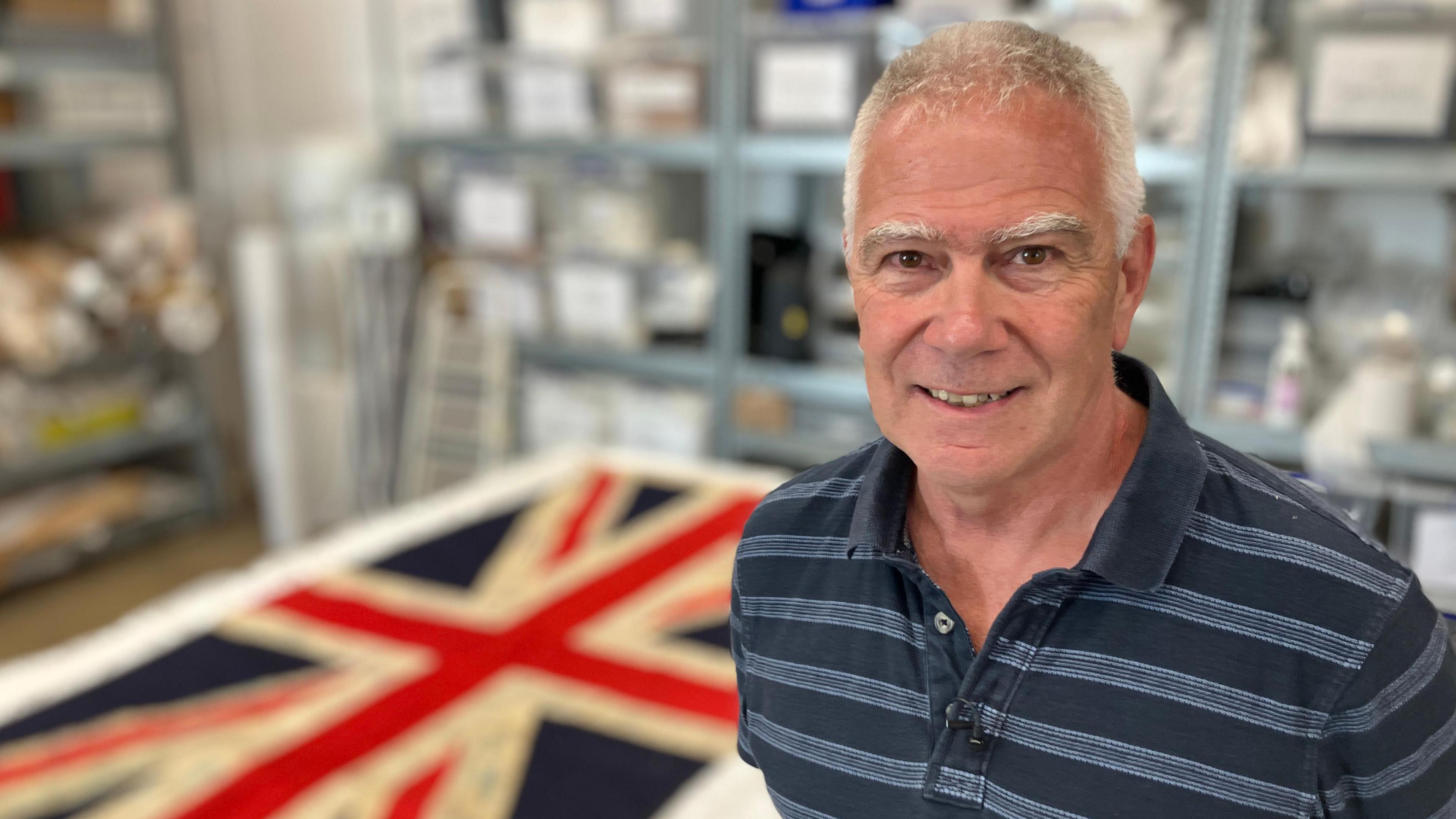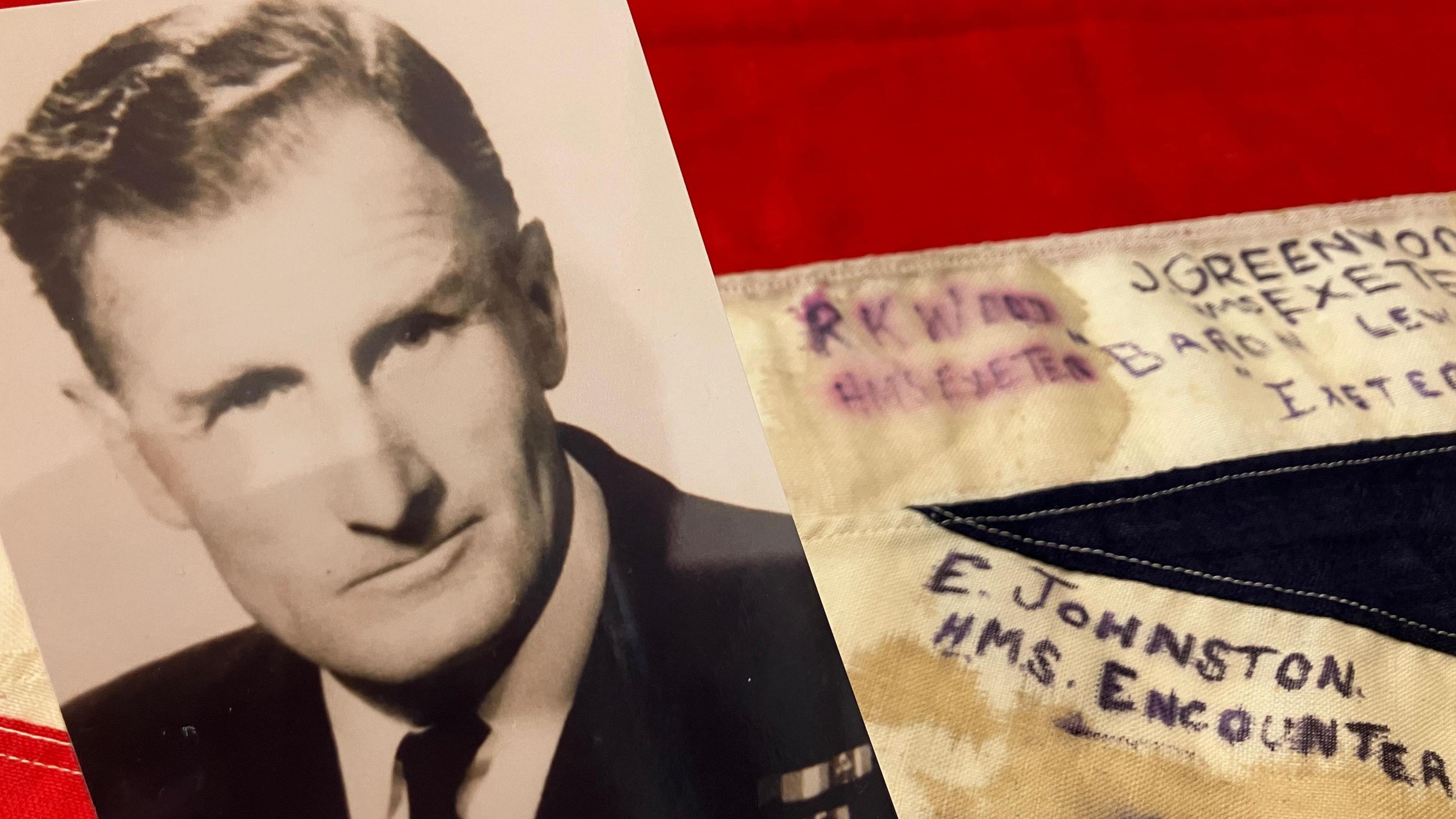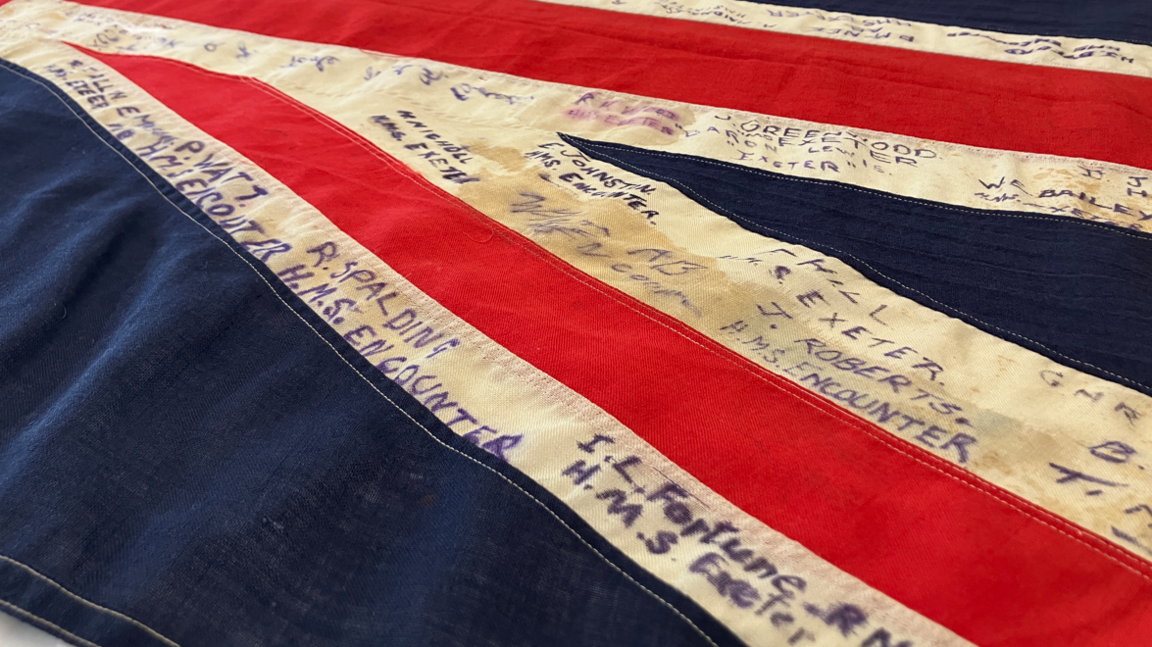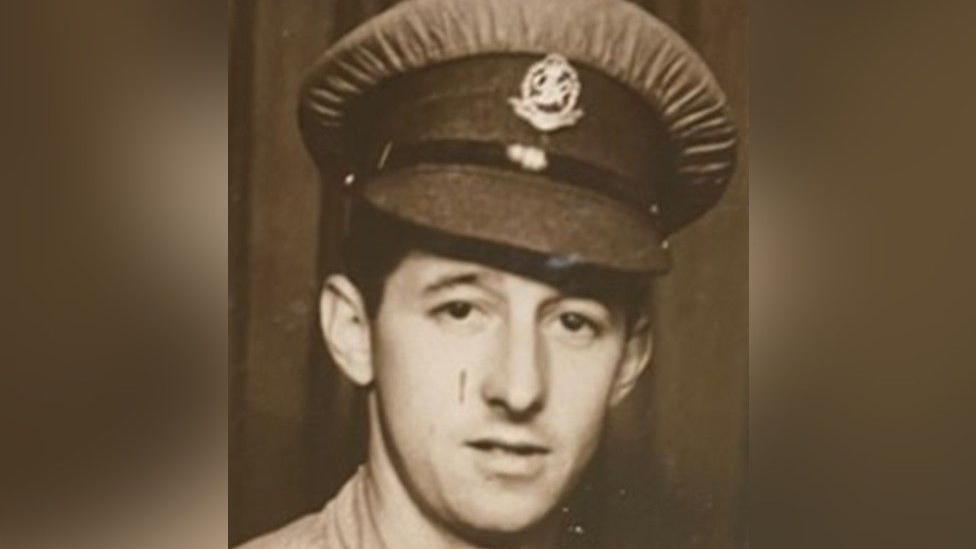PoW-signed flag is 'a piece of history'

Richard Wood was invited to see the flag at the National Museum of the Royal Navy
- Published
The son of a Royal Navy officer who was imprisoned in a Japanese prisoner of war camp has described a flag signed by his father as a "piece of history".
Richard Wood from Fordingbridge, Hampshire, spotted his father's name, also Richard, on the union flag when it was featured in a recent BBC TV news report.
He had served on HMS Exeter, which was sunk in the Java Sea, before being imprisoned by the Japanese in Indonesia.
The National Museum of the Royal Navy in Portsmouth allowed Mr Wood access to see the flag and is looking to trace family members of other men who signed it.

Richard K Wood wrote his name and that of his ship - HMS Exeter
The flag was in an airdrop of food supplies to those in Makassar Prisoner of War Camp in Indonesia by the Australian air force in September 1945 after the Japanese had surrendered.
Makassar contained British, American and Dutch servicemen.
A large contingent were from the Plymouth-based HMS Exeter, as well as HMS Encounter and the USS Pope, which had all been sunk during the Battle of the Java Sea in March 1942.
Mr Wood said his father had never mentioned the flag.
"He very rarely spoke about anything of his time, which was a shame - but I understand they were told not to," he said.
He spotted his father's writing on the flag when it was featured on a BBC South Today report about objects held at the museum, and was invited to see it.
"It's a real piece of history and its a real privilege to see it - knowing he signed in as he knew the war was almost over.
Mr Wood Snr stayed in the Royal Navy until he retired in 1968, having reached the rank of lieutenant commander. He died in 2007, aged 93.

The flag has at least 50 names written on it
Prisoners in the camp suffered dreadful conditions during their three years in captivity. They endured frequent beating, while Malaria and other diseases were rife.
Will Heppa, the museum's curator of artefacts, said the flag had been dropped as way of telling the prisoners, they "hadn't been forgotten".
The museum is hoping to put the flag on public display and is appealing for information about other men who signed it.
"If we can collect as much supporting information about the individuals named on the flag, that would be wonderful," he added.
Get in touch
Do you have a story BBC Hampshire & Isle of Wight should cover?
You can follow BBC Hampshire & Isle of Wight on Facebook, external, X (Twitter), external, or Instagram, external.
- Published19 June

- Published2 May
